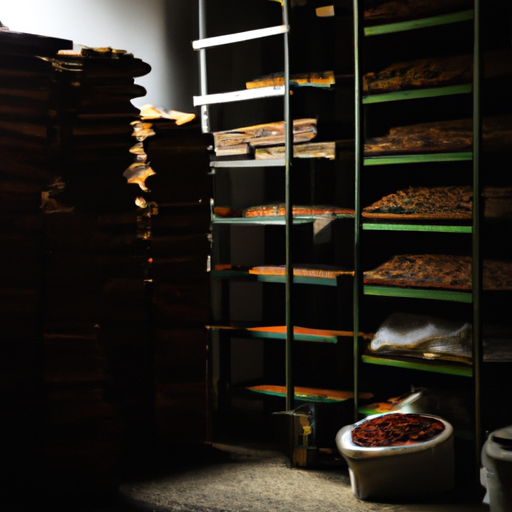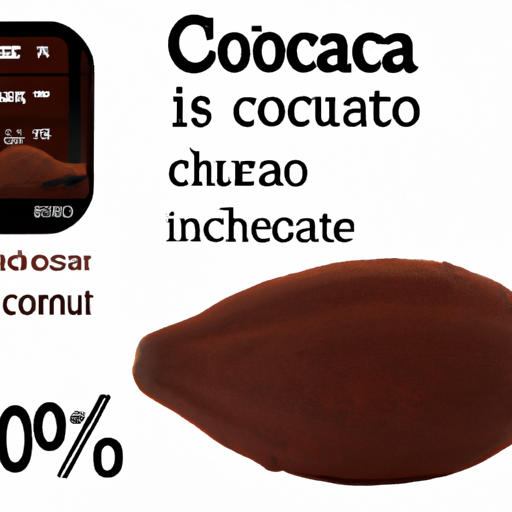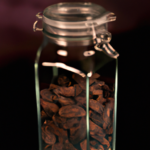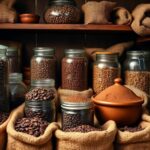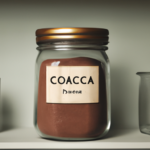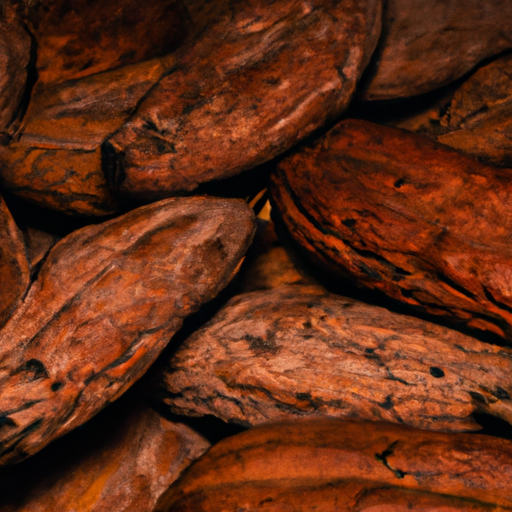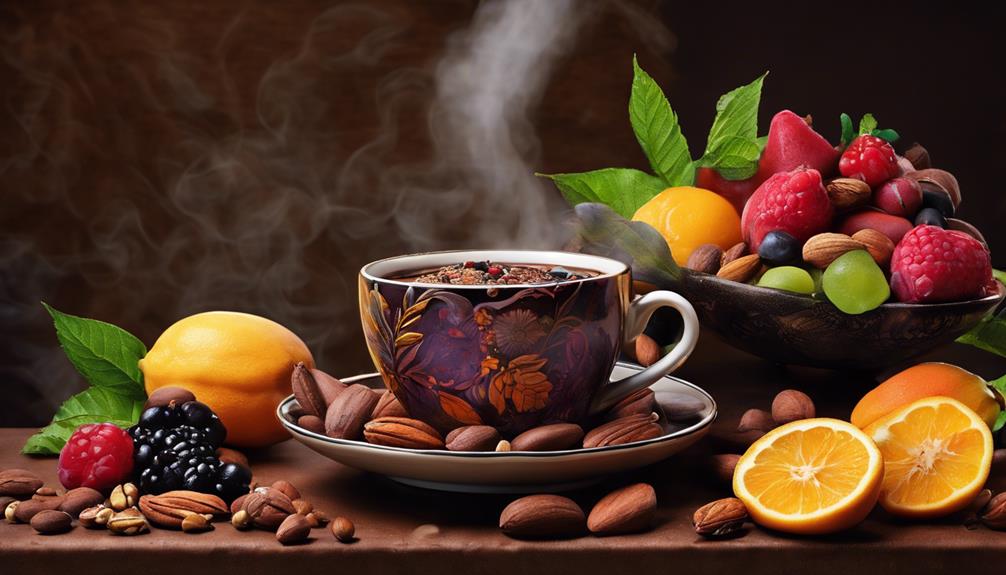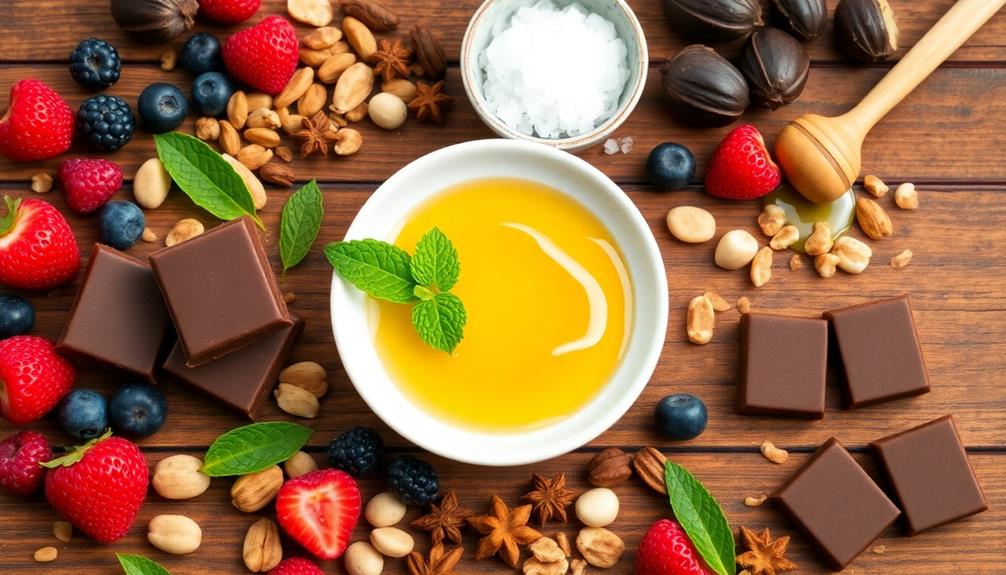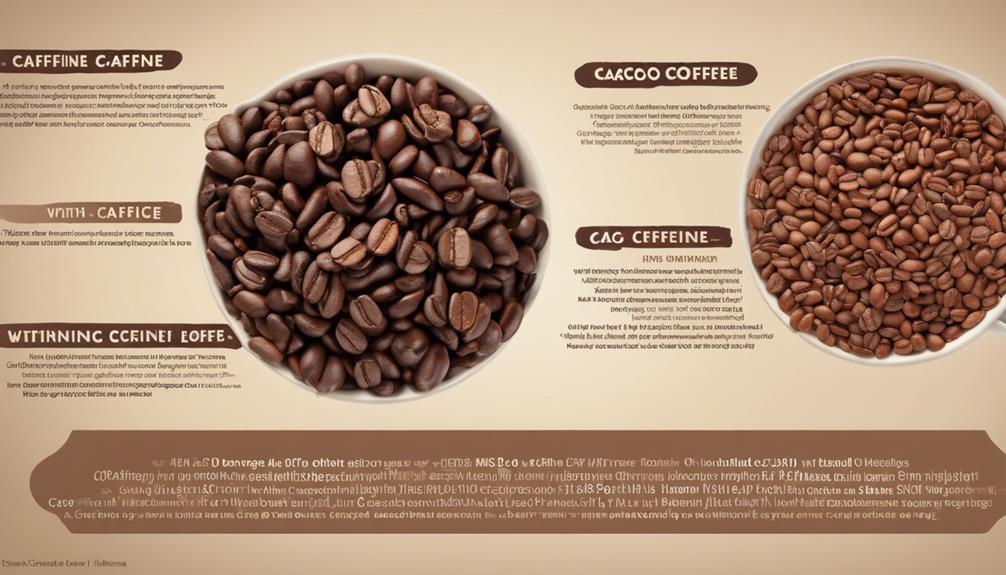Curious about the shelf life of raw cacao? Allow me to share some insight and spill the beans on all the important details.
Raw cacao, the unprocessed form of chocolate, is a beloved ingredient for its rich flavor and potential health benefits. But like any perishable food, it does have a shelf life.
In this article, we will explore the factors that affect the freshness of raw cacao, signs of spoilage to watch out for, and proper storage techniques to extend its shelf life.
Additionally, we’ll debunk common misconceptions and answer frequently asked questions about raw cacao storage.
So grab a mug of steaming hot cocoa and let’s dive into the world of raw cacao’s shelf life!
Key Takeaways
- Raw cacao can last up to 2 years if stored properly.
- It is important to store raw cacao in a cool, dark, and dry place to ensure its shelf life.
- Heat, moisture, and light exposure should be avoided when storing raw cacao.
- Use airtight containers or resealable bags for storage and keep away from strong odors.
The Shelf Life of Raw Cacao
Do you ever wonder how long your raw cacao will last before it goes bad? Raw cacao, known for its rich flavor and numerous health benefits, can be stored for quite some time if proper precautions are taken.
The shelf life of raw cacao can vary depending on different factors. When stored in a cool, dry place away from direct sunlight, raw cacao can last up to two years. However, it is important to note that the flavor and quality may deteriorate over time. To make the most of your raw cacao, it is recommended to use it within the first year for optimal freshness and taste.
Incorporating raw cacao into various recipes not only adds a delicious twist but also boosts the nutrient content of your favorite treats. The health benefits of raw cacao, such as its high antioxidant content and mood-enhancing properties, make it a popular choice for health-conscious individuals.
Understanding the shelf life of raw cacao and its benefits can help you make the most of this versatile ingredient. Now, let’s explore the factors that affect the freshness of raw cacao.
Factors that Affect the Freshness of Raw Cacao
To ensure the freshness of your raw cacao, consider factors such as storage conditions and product quality. Proper storage is crucial for extending freshness and preserving quality:
-
Temperature: Store raw cacao in a cool, dry place, away from sunlight and heat sources. High temperatures can cause melting or a rancid taste.
-
Humidity: Moisture can lead to mold growth and spoilage. Store cacao in an airtight container to protect it from excess humidity.
-
Quality: The freshness and quality of raw cacao depend on the source and processing methods. Choose ethically sourced and minimally processed cacao for the best flavor and nutritional value.
By following these guidelines, you can extend the freshness of your raw cacao and preserve its quality.
Now, let’s explore the signs of spoiled raw cacao.
Signs of Spoiled Raw Cacao
Storing raw cacao in improper conditions may result in a disappointing and unpleasant experience when indulging in its rich, decadent flavor. To avoid this, it is essential to know the signs of spoiled raw cacao.
One of the most noticeable indicators is a change in smell. Fresh raw cacao has a strong, pleasant aroma, while spoiled cacao may have a sour or musty odor.
Additionally, visual cues can help determine the freshness of raw cacao. Look out for mold growth, discoloration, or a dull appearance, as these are clear signs of spoilage.
Finally, taste can also reveal if raw cacao has gone bad. If it tastes bitter or rancid, it is best to discard it.
Understanding these spoiled cacao indicators can help ensure that you always enjoy the best quality cacao.
Now, let’s explore proper storage techniques for raw cacao.
Proper Storage Techniques for Raw Cacao
When properly stored, raw cacao maintains its freshness and flavor for an extended period of time. To ensure the longevity of raw cacao, it is important to follow specific storage techniques. Here are some cacao storage tips that will help in preserving raw cacao freshness:
-
Temperature: Store raw cacao in a cool, dry place with a temperature between 60-70°F (15-21°C). Avoid exposure to heat or direct sunlight, as it can cause the cacao to deteriorate.
-
Humidity: Keep raw cacao away from moisture, as it can lead to mold growth and spoilage. Store it in an airtight container to prevent moisture absorption.
-
Air Exposure: Limit exposure to air, as it can cause oxidation and loss of flavor. Seal the container tightly after each use.
By following these storage techniques, you can extend the shelf life of raw cacao and enjoy its rich taste and nutritional benefits for longer periods. In the next section, we will explore ways to further extend the longevity of raw cacao.
Extending the Shelf Life of Raw Cacao
Preserving the freshness and flavor of raw cacao can be a piece of cake with the right storage techniques.
To extend the freshness of raw cacao, it is important to keep it in an airtight container, away from moisture, heat, and light. These elements can accelerate the degradation process and affect the quality of the cacao.
Additionally, storing raw cacao in a cool and dark place, such as a pantry or a refrigerator, can help maintain its freshness for a longer period.
It is also essential to avoid exposing the cacao to strong odors, as it can absorb them easily.
By following these storage guidelines, one can ensure that raw cacao remains fresh and of high quality for an extended period.
Moving forward to the next section about using expired raw cacao, it is important to understand the potential risks involved.
Using Expired Raw Cacao
If you’ve found yourself with expired raw cacao, don’t be too quick to toss it out just yet! While the quality and taste may have diminished, there are still ways to make use of it. Here are four ideas for using expired raw cacao:
-
Baking: Incorporate the expired cacao into baked goods like cookies or brownies. The heat will help mask any off flavors.
-
Smoothies: Add a spoonful of expired cacao to your favorite smoothie recipe for a rich and chocolatey boost.
-
Hot Chocolate: Mix the expired cacao with hot milk or water to create a comforting and indulgent beverage.
-
Face Mask: Combine the cacao with honey or yogurt to create a nourishing face mask. The antioxidants in the cacao can help rejuvenate the skin.
Although using expired raw cacao may not provide the same taste and benefits as fresh cacao, it can still add a touch of chocolatey goodness to your recipes.
Now, let’s explore the benefits of fresh raw cacao.
Benefits of Fresh Raw Cacao
Indulging in fresh raw cacao is like taking a bite into a velvety, decadent piece of heaven. The benefits of fresh raw cacao extend far beyond its rich and indulgent flavor. Not only is it a delicious addition to various recipes, but it also offers numerous health benefits.
To showcase the versatility of fresh raw cacao, let’s explore a table that highlights some mouth-watering recipes:
| Recipe | Ingredients |
|---|---|
| Chocolate Smoothie | Fresh raw cacao, banana, almond milk |
| Raw Brownies | Fresh raw cacao, dates, nuts |
| Chocolate Chia Pudding | Fresh raw cacao, chia seeds, almond milk |
In addition to its deliciousness, fresh raw cacao is packed with antioxidants, vitamins, and minerals. It has been found to improve mood, boost cognitive function, and even lower blood pressure. So, incorporating fresh raw cacao into your diet not only satisfies your sweet tooth but also promotes overall well-being.
Now, let’s delve into the next section about common misconceptions regarding raw cacao’s shelf life.
Common Misconceptions about Raw Cacao’s Shelf Life
There are some common misconceptions about the shelf life of raw cacao that need to be addressed. One misconception is that raw cacao lasts indefinitely, but this is not true. Like any other food, raw cacao has a limited shelf life. However, if stored properly, it can be preserved for an extended period of time.
To ensure the longevity of your raw cacao, it is crucial to store it in a cool, dry place, away from direct sunlight and moisture. This helps to prevent the growth of mold and the development of off-flavors. Using airtight containers can also help to protect the raw cacao from oxidation, which can cause it to become rancid.
By following these simple storage tips, you can enjoy the benefits of raw cacao for a longer period. Now, let’s move on to addressing frequently asked questions about raw cacao storage.
Frequently Asked Questions about Raw Cacao Storage
To truly maximize the benefits of fresh raw cacao, it’s important to address some commonly asked questions about how to properly store this precious ingredient. Here are some frequently asked questions about raw cacao storage:
| Question | Answer |
|---|---|
| How long does raw cacao last? | Raw cacao can last up to two years if stored properly. |
| What are the optimal storage conditions for raw cacao? | Raw cacao should be stored in a cool, dark, and dry place. Avoid exposure to heat, moisture, and light. |
| Can raw cacao be refrigerated or frozen? | It is not recommended to refrigerate or freeze raw cacao as it can affect its texture and flavor. |
| How can I prolong the freshness of raw cacao? | To prolong freshness, store raw cacao in airtight containers or resealable bags. It is also helpful to keep it away from strong odors. |
By following these guidelines, you can ensure that your raw cacao stays fresh and retains its optimal quality for a longer period of time.
Frequently Asked Questions
Can I still use raw cacao if it has passed its expiration date?
Using expired raw cacao in baking may result in a less desirable taste and texture. The chemical composition changes over time, affecting the flavor and consistency. It’s recommended to use fresh raw cacao for optimal results.
Does raw cacao lose its nutritional value over time?
Raw cacao does not lose its nutritional value over time if stored properly. To preserve its beneficial compounds, store it in an airtight container in a cool, dark place. This will help retain its antioxidants, minerals, and other health-promoting properties.
Can I store raw cacao in the refrigerator or freezer to extend its shelf life?
Storing raw cacao in the refrigerator or freezer can help preserve its freshness and extend its shelf life. However, be cautious not to go overboard and turn your fridge into a cacao wonderland.
How do I know if my raw cacao has gone bad?
To know if my raw cacao has gone bad, I look for signs of rancid cacao such as a strong, unpleasant odor and a bitter taste. Properly storing raw cacao in an airtight container in a cool, dark place helps prevent spoilage.
Are there any health risks associated with consuming spoiled raw cacao?
If you consume spoiled raw cacao, there may be potential health risks involved. While raw cacao offers numerous health benefits, consuming spoiled cacao can lead to food poisoning or gastrointestinal issues.
What is the Shelf Life of Raw Cacao?
Raw cacao shelf life can vary depending on storage conditions. When stored in a cool, dark place, raw cacao can remain fresh for up to two years. However, exposure to heat and light can shorten its shelf life. It’s best to keep raw cacao in an airtight container to maintain its quality.
Conclusion
In conclusion, it’s crucial to store raw cacao properly to ensure its freshness and extend its shelf life. By following the proper storage techniques, such as keeping it in a cool and dry place, raw cacao can last for up to two years.
However, it’s important to note that using expired raw cacao may result in a loss of flavor and potential spoilage. So, take care of your raw cacao to fully enjoy its numerous health benefits and indulge in its rich, chocolatey goodness.
Remember, proper preservation leads to an exquisite taste experience.

